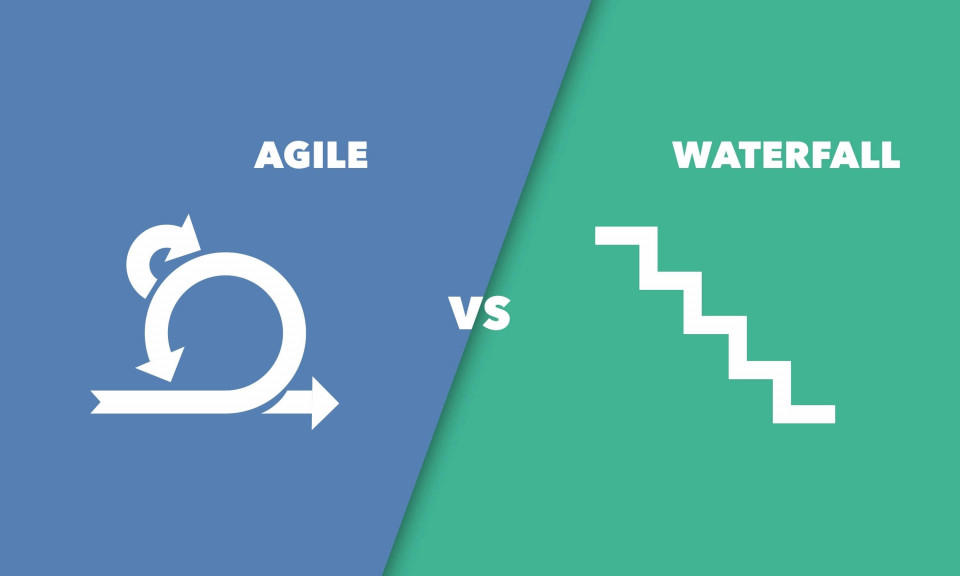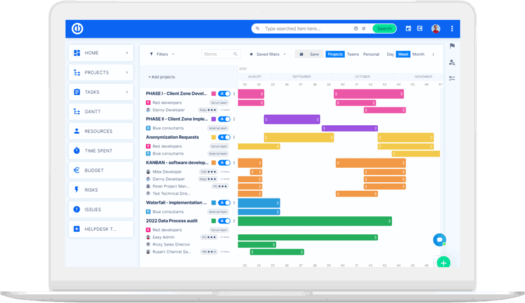Waterfall vs. Agile: Hvad er den bedste tilgang til et softwareudviklingsprojekt?
En af de første beslutninger, der skal træffes, når man starter et softwareudviklingsprojekt, er den metodologi, der skal anvendes. Hvis du er ny inden for udvikling, er en udviklingsmetodologi simpelthen den måde, du organiserer dit arbejde på.

For software development projects, the two most popular methodologies are Waterfall and Agile. If you ask a new-age developer, they will likely tell you Waterfall is dead. However, because many organizations still use traditional development environments and processes, the Waterfall methodology is still widely used today.
Both Waterfall and Agile have their unique requirements, strong points, and challenges. To help you evaluate when to use either of these methodologies, let’s walk through their advantages and disadvantages, where one may be more suitable than the other, and whether it is possible to combine the two approaches and benefit from each concurrently.
The Waterfall Approach
As the name suggests, Waterfall describes a stepped approach with a prescribed set of activities. It entails that you start by gathering and documenting all requirements, then move to design, development, testing, and finally deployment and delivery.
No subsequent step can begin if the current step is not complete, and the end result is a culmination of all the steps involved to produce the final product.
Benefits of the Waterfall methodology
Developers use the Waterfall approach because it is straightforward. It enables you to define what you are building in great detail at the beginning, which makes it easier to set start-and-end dates, milestones, and deliverables.
Once development starts, team members can concentrate on their work without continuously engaging stakeholders to discuss product requirements.
Furthermore, since everything is documented and approved before development, the final product is more predictable. The team does not need to meet frequently to ensure the project is staying on course to achieving the desired result.
Potential drawbacks of the Waterfall methodology
Although the waterfall methodology is structured and straightforward, it has some limitations that make it relatively unsuited for some projects.
For starters, defining requirements upfront may leave less room for creativity because it does not encourage team members to exploit opportunities they might uncover during development.
The Waterfall approach is also less accommodating to end-user feedback. Therefore, it is not ideal for projects that require active customer involvement.
Lastly, a rigid methodology can make cost adjustments harder to incorporate, especially if undefined needs come up along the way. Making changes to a finished product typically involves extensive and expensive rework.
The Agile Approach
The Agile methodology replaces rigid structures with a more collaborative process, where requirements and results evolve through iterations.
With the Agile methodology, a project team can start by establishing a few initial requirements, then move to designing, developing, testing, and deploying. After deployment, the team collects feedback and establishes new requirements for the next update. This cycle continues until the final desired product is achieved.
Benefits of the Agile methodology
Agile offers a lot more flexibility than Waterfall. Your team can adjust priorities and requirements easily to meet evolving demands. Flexibility also promotes creativity because team members know any new ideas can be implemented with ease.
Unlike the Waterfall methodology, Agile encourages cross-functional teamwork. Because expectations can be adjusted during development, stakeholders work more closely together, contributing new ideas and empowering each other to deliver the best final product.
Agile projects are quicker to develop and deploy because they skip the initial steps of detailed structuring and documentation. The team spends its time and energy developing and improving the software product with each iteration.
Potential drawbacks of the Agile methodology
Agile presents appealing benefits, but it may not be ideal for some initiatives. The primary concern with this approach is that timelines, milestones, budgets, and the final outcome of the project are less predictable. A flexible approach to development means outcomes might be significantly different from what was initially envisioned.
Additionally, Agile requires the active participation of all team members and end-users. The entire team must be prepared to devote time, build trust, and contribute to building the product.
Because Agile does not insist on documentation, it may not be ideal for projects that require extensive record-keeping, such as healthcare and government initiatives.
Finally, agile keeps a project more open to change than Waterfall. As a result, rework is often inevitable, which creates the possibility of delays and additional costs.
Hvordan kan du beslutte mellem Agile og Waterfall til dit projekt?
Agile og Waterfall er unikt effektive. Så den rigtige tilgang for dig vil afhænge af karakteren af dit projekt.
Hvis dit projekt har en fast deadline, stramt budget, foruddefinerede funktioner eller strenge reguleringskrav, vil Waterfall være det bedste valg for dig. Med denne tilgang kan du tydeligt definere projektet og følge en fast og forudsigelig vej for at opnå det ønskede produkt.
På den anden side, hvis du ikke er sikker på, hvad du skal bygge i starten, hvis din tidsplan og budget er fleksible, hvis du er åben for nye ideer, og hvis dit team værdsætter samarbejde frem for at arbejde i siloer, er Agile vejen at gå.
Implementer en Redmine hybrid løsning for det bedste fra begge verdener
På dette tidspunkt undrer du dig nok over, om det er muligt at kombinere både Agile og Waterfall for at udnytte fordelene ved hver tilgang. Sandheden er, at mange udviklingsteams kombinerer disse to metoder for at optimere ressourceudnyttelsen og maksimere kundetilfredsheden.
Med Easy Redmines Scrum og Kanban-værktøjer kan du udvikle en hybrid model, hvor projektet starter med en Waterfall-tilgang for at nå en godkendt design, og derefter vedtager Agile for at forbedre det.
Alternativt kan du starte med Agile for at udvikle et billede af dit endelige produkt og skifte til Waterfall, når du klart forstår, hvad dit projekt vil opnå.
Tilmeld dig Easy Redmine og få det bedste fra Agile og Waterfall til dit softwareprojekt.

Agile project management? Easy.
Get all powerful tools for perfect project planning, management, and control in one software.
